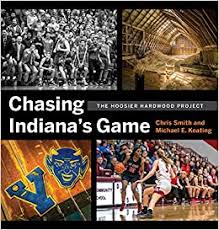
Smith and Keating discussed the book and its origins in an interview with Inside INdiana Sports Host Bill Benner.
Smith says the idea stemmed from a photograph he found of his father’s high school basketball team, the Versailles Frenchies.
“In the picture, you could see the gym in the background. I thought, ‘I wonder if that gym’s still around,'” said Smith. (I thought) it’d be interesting to kind of go and photograph some old high school basketball gyms in Indiana knowing what an important place they played in the state’s history.”
Keating says narrowing everything they had down into one book was a difficult task. He says they could probably release two more books with all of the photos and information they gathered.
“I think what we looked at here when we were putting this book together…each of these pictures on the facing pages have sort of a kinship. It may be in tone or in color in contrast. We tried to pace the position the pictures so they had a rhythm along with the words that went with them.”
Smith adds the process of creating the book not only highlighted the locations of the gyms, but their architecture as well.
“We have a history of great architecture in these gyms. We discovered a number in southern Indiana that were actually sunken gyms; in other words, most of the gym was built underground. (It’s) kind of an architectural philosophy that came from an architect down in the southwest part of the state.”
The book was released by the Indiana University Press as part of the Indiana Historical Society’s Bicentennial exhibit.
